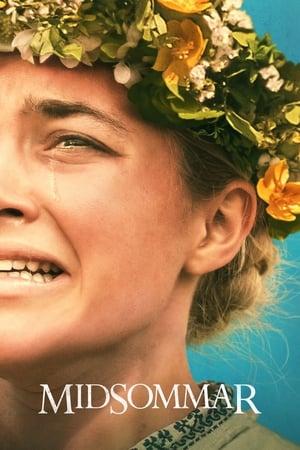Refined and disturbing, but is there more style or more substance?
I waited a few days, after seeing it, before writing some thoughts on this film, because it is difficult to decipher. I understand why it provoked opposite reactions among critics: I keep asking myself whether I saw an excellent film or a remarkable stupidity.
From a certain point of view, even without being perfect (for example the special effects of some scenes did not completely convince me, the use of CGI, and the story in some places becomes a bit convoluted and unconvincing) could easily be defined, if not a masterpiece, certainly an extraordinary film, not only by the parameters of horror cinema: I think finding similar care in the direction of a horror film is quite rare and the film has rightly been compared to The Witch. It shares a lot with it in terms of result (both films, rather than frightening, disturb in a visceral and profound way) and stylistic research, although Robert Eggers' film is much more successful for me: I would watch The Witch many times, but I don't think I'll ever watch Midsommar again. Alongside the brutal splatter of some scenes there is also the remarkable beauty of others (for example those relating to the dance to elect the May Queen). Keeping the camera still for a few minutes during a dialogue between multiple characters, for example, is a conscious and almost courageous directorial choice, in an era in which films sometimes cause nausea due to the continuous, frenetic and unmotivated movement of the camera. Ari Aster is a director of considerable talent and if good morning starts in the morning he has a bright career ahead of him.
The problem with this film, in my opinion, is that the line between sophistication and kitsch is very thin, to the point that I found some scenes unintentionally comical which theoretically should be frightening and dramatic : more than once I wondered if the director, considering the care and skill with which he directed the film, wasn't in some way winking at the viewer. Without spoiling the story, for example at a certain point the leg appears in the middle of a flowerbed - planted in the ground like a flower - of one of the characters who has evidently met a bad end. I highly doubt that such a scene was written with the intent or hope of being taken seriously, in fact it made me laugh and - forgive me - it made me think back to the unforgettable "Three Men and a Leg". There are actually many scenes in which a certain theatricality and exaggeration clash with the context and distract.
The ending itself left me a little dumbfounded: ambiguous and open to multiple interpretations, but it didn't convince me of the All.
The actors were very good, especially Florence Pugh, just as I found the photography and soundtrack excellent.
In conclusion, it is a film that deserves to be be seen - if you don't mind splatter scenes - but I can't say which audience it was designed for: it might appeal to both horror enthusiasts and auteur cinema lovers, but at the same time it might displease some (the element “scary” drowns a little too much and is watered down in the obsession with the style of this film) and the others (it is a story that only makes sense in the context of scary cinema, which often presents unlikely and not very credible situations, but the spectator is ready to play the game) .







